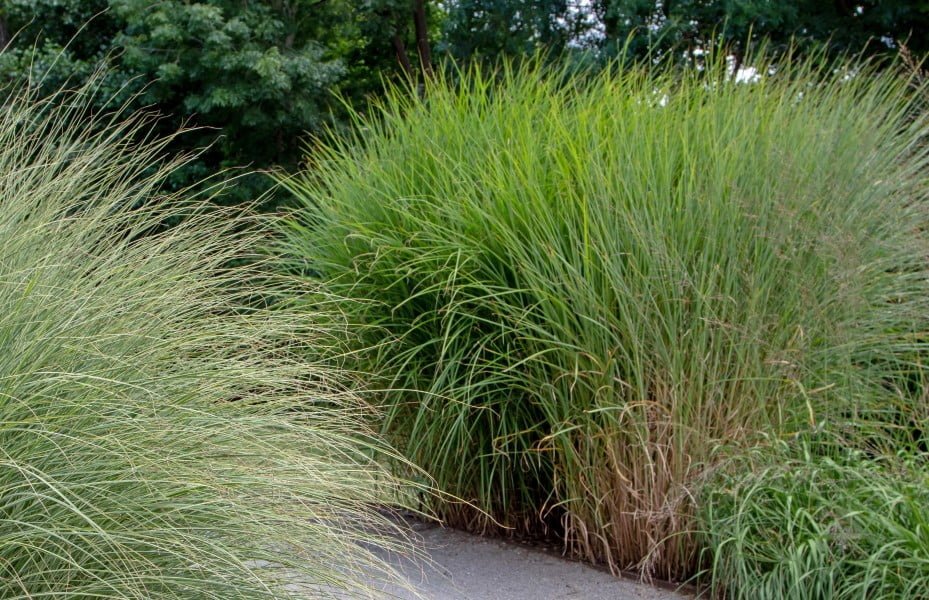Molinia caerulea, commonly known as moor grass or purple moor grass, is a versatile and attractive ornamental grass. With its graceful, fountain-like foliage and striking plumes, Molinia caerulea can make a stunning accent plant or focal point in any garden.
An Overview of Molinia Caerulea
Molinia caerulea is a herbaceous perennial grass that is native to parts of Europe, including the British Isles. This ornamental grass goes by several common names like purple moor grass, moor grass, purple grass, and feather grass. The species name “caerulea” refers to the purple or bluish hue of its attractive seed heads and flower plumes.
This clump-forming grass typically grows 2-4 feet tall and wide, with slender green leaves that turn golden bronze in fall. From mid-summer to early fall, delicate purplish flower panicles rise above the foliage on erect stems. Molinia caerulea puts on a showy display when its airy plumes sway in the breeze.
Hardy to zone 4, Molinia caerulea is versatile enough to thrive in full sun to partial shade. It can adapt to various soil types and moisture levels. With its fine texture and movement, it adds interest and contrast to garden beds and borders. Overall, this ornamental grass makes an excellent landscape plant for many settings.
You might also be interested in: Ornamental Grasses
Examining the Physical Attributes
Molinia caerulea has a distinctive upright, arching form with thin leaves that emanate from dense basal clumps. Here is a closer look at its physical features:
- Height and width – It typically reaches 2-4 feet tall and wide. Some cultivars may be shorter or taller.
- Foliage – The slender, linear green leaves grow up to 20 inches long. Foliage takes on warm shades of yellow, orange, red or purple in the fall.
- Flowers and plumes – From mid summer to early fall, upright stems carry open, branched panicles that rise well above the foliage. Panicles start out green before turning shades of purple, pink or greyish-brown.
- Roots – Underground, Molinia caerulea spreads slowly via short rhizomes to form loose clumps. It generally maintains a tidy form without spreading aggressively.
- Texture – Fine and medium textured. The delicate foliage and airy plumes provide visual interest.
- Movement – Stems and leaves sway gracefully in the wind, adding movement to the garden.
Growing Conditions
One reason Molinia caerulea makes a great landscape plant is its adaptability to various growing conditions:
- Hardiness – It is cold hardy to zone 4, thriving across a wide range of climates. Provide winter mulch in very cold areas.
- Sun – Grows best in full sun but also tolerates partial shade. Needs at least 4-6 hours of direct sun.
- Soil – Tolerates a wide range of soil types including sand, loam and clay. Prefers moist, well-drained soil but is drought tolerant once established. Intolerant of wet soils.
- pH – Does well in acidic to slightly alkaline soils, between 5.5 to 7.5 pH.
- Moisture – Requires regular watering until roots establish, then is quite drought resistant. Avoid wet soils which can cause root rot.
- Maintenance – Easy to care for overall. Remove old foliage in late winter before new growth emerges.
Planting and Care
Here are some tips for getting Molinia caerulea established successfully in your landscape:
Planting
- Plant in spring once the threat of frost has passed. Container grown plants can be planted anytime during the growing season.
- Space plants 18-24 inches apart in garden beds, borders or patches. Give adequate space for growth.
- Dig a hole twice as wide and deep as the root ball. Set the plant at the same level it was growing in the nursery pot.
- Backfill with loose soil and water thoroughly after planting. Apply a 2-4 inch layer of mulch around the base to retain moisture.
Watering
- During the first year, provide 1 inch of water per week until established. After establishment, water only during extended droughts.
- Avoid overwatering which can lead to root rot and fungal issues. Allow soil to dry slightly between waterings.
Fertilizing
- Apply a balanced, slow-release fertilizer in early spring. Additional applications are not necessary unless plants look nutrient deficient.
- Avoid high nitrogen fertilizers which cause excessive foliage growth at the expense of flowers and plumes.
Pruning and Maintenance
- Cut back any dead, damaged or unsightly growth as needed during the growing season to keep plants looking trim.
- In late winter, cut back old foliage to a few inches above the ground to make way for new spring growth.
- Divide large, overgrown clumps every 3-5 years in spring. Replant divisions to rejuvenate the stand.
- Remove spent plumes after they fade to prevent self-seeding.
Using Molinia Caerulea in the Landscape
Valued for its fine texture, movement and versatile nature, Molinia caerulea fits beautifully into various garden styles and settings:
Garden Styles
- Cottage gardens – Adds effortless movement and soft colour
- Prairie or natural gardens – Sways gracefully among native plants
- Rock gardens – Highlights and softens hardscaping
- Edging and hedges – Lines pathways or creates living walls
- Specimen planting – Stunning as a stand-alone focal point
Landscaping Uses
- Accent or focal point – Draws attention with height, form and colour
- Screens or backgrounds – Provides soft texture as a backdrop
- Group or mass plantings – Creates motion and interest when planted en masse
- Containers – Lovely spiller or thriller in container combinations
- Garden pools and ponds – Contrasts beautifully against water
- Borders and beds – Blends well with perennials, grasses, shrubs and more
With its gracefully arching form and purple plumes, Molinia caerulea makes a statement wherever it is planted. Allow it to sway in borders, beds, prairie gardens and other landscapes to admire its full ornamental appeal.
Frequently Asked Questions
Q. What is the best time of year to plant Molinia caerulea?
The optimal time for planting is spring after the last frost date. It can also be planted in fall in mild winter climates. Container grown plants can be planted anytime during the growing season.
Q. How often should I water Molinia caerulea?
During the first year, provide 1 inch of water per week. After establishment, water only during extended droughts. Avoid overwatering.
Q. Does Molinia caerulea need fertilizer?
Apply a balanced, slow-release fertilizer in early spring. Additional fertilizer is not necessary except for nutrient deficient plants.
Q. How do I prune Molinia caerulea?
In late winter, cut back any dead or damaged foliage to a few inches above the ground before new growth begins. Remove spent plumes after flowering as well.
Q. What pests or diseases affect Molinia caerulea?
It is relatively pest and disease free. Potential problems include snout beetles, eriophyid mites, leaf spot, rusts and anthracnose. Maintain overall plant health to prevent issues.
Final thoughts
With its graceful shape, fine texture and stunning plumes, Molinia caerulea is a versatile ornamental grass for gardens and landscapes. This attractive perennial grass thrives in sun or partial shade, adapts to various soil types, and requires minimal care once established. Use Molinia caerulea as a specimen plant, elegant backdrop, or complement among borders and beds. Showcase its natural beauty as a stand-alone focal point or let it sway gently among complementary plantings. With proper siting and care, this ornamental moor grass will add striking form, movement and captivating colour to gardens for years to come.



